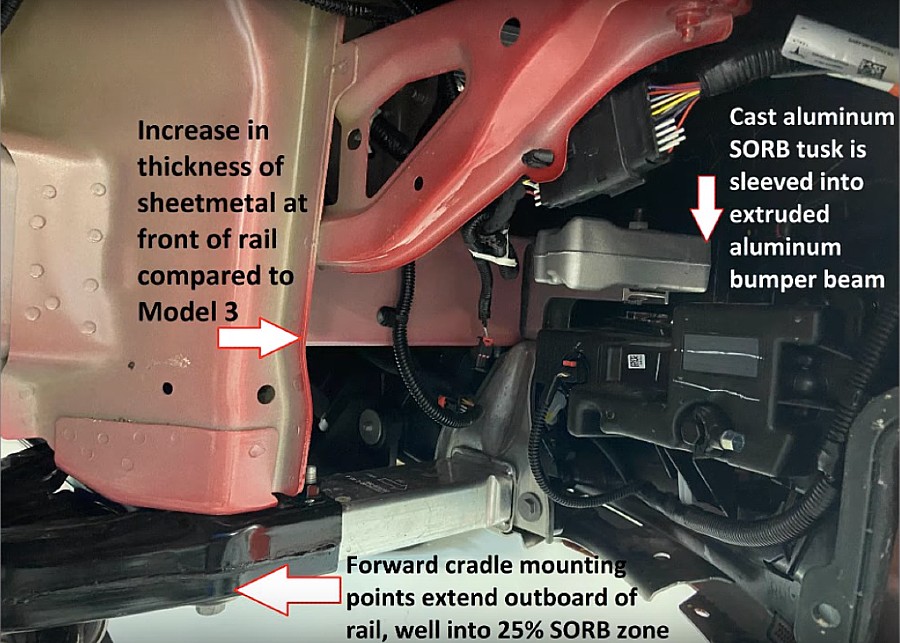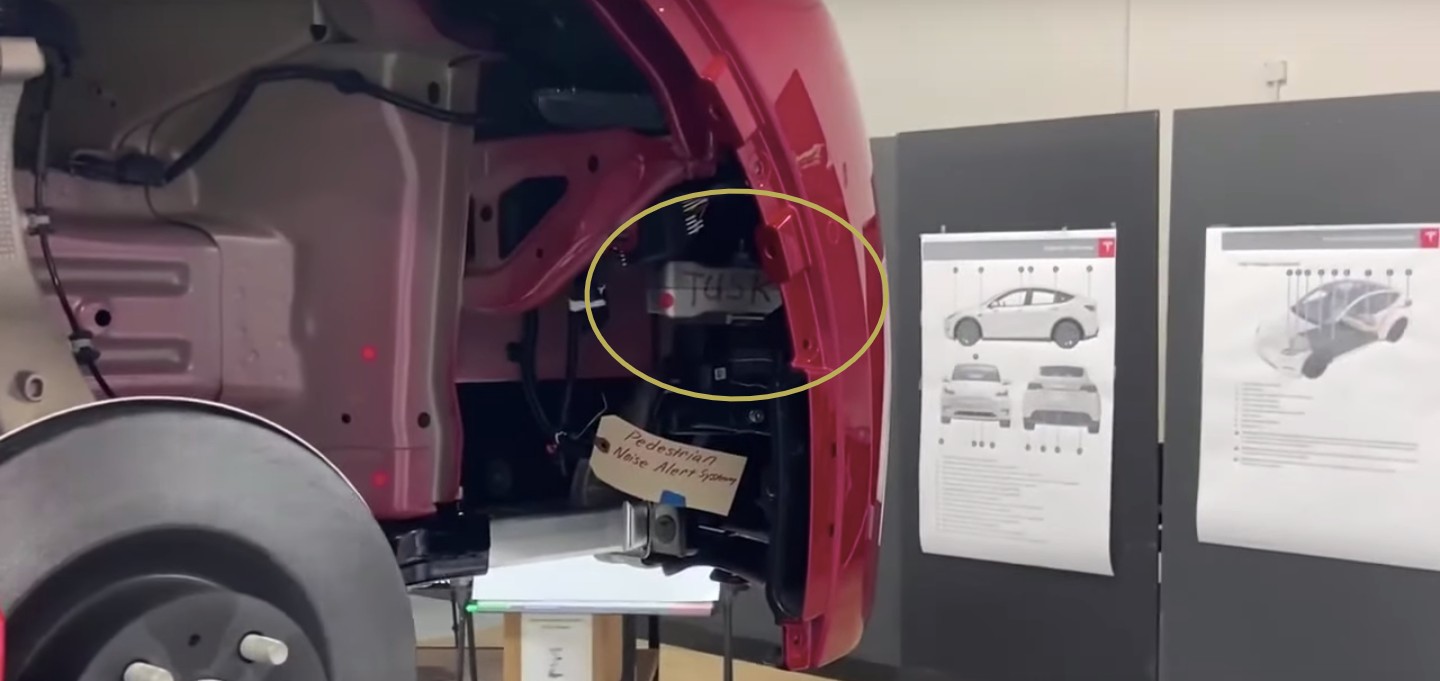Sandy Munro’s newest video of his Model Y teardown series included a breakdown of the electric crossover’s revised front impact structure. Most notably, Munro’s analysis of the improved impact structure on the Model Y could make Tesla’s reputation for producing some of the safest cars on the market even more solidified, as the thicker and sturdier elements in the all-electric crossover could pave the way for another stellar safety rating.
When Elon Musk unveiled the Model Y in March 2019, he stated that “We expect it will be the safest midsize SUV in the world by far,” he said. The numerous safety improvements that have been recognized by Munro are vital indicators that Musk may be right, and the Model Y could prove itself to be one of, if not the safest car in its class in the market.
As the Model Y’s performance features have already been broken down by many, the safety features are among the more elusive details of the vehicle. Munro notes the Model Y contains several improved features compared to the Model 3, which already holds a five-star safety rating. The first described addition to the Model Y’s safety “system” is the increased thickness of the sheet metal at the front of the rail, as seen in the image below.

This addition will improve the front-end collision system of the vehicle, which was already impressive on the Model 3. However, Tesla is dealing with a more massive vehicle that maintains a different body structure, and beefing up the parts in the front end of the car was one of the ways the company could make the Model Y safer.
Next, Munro points out Tesla’s revisions to the front cradle. The cradle is a subframe structural component that is separate from the larger and “primary” chassis on a vehicle. It is usually used to carry engines, drivetrains, suspension systems, or in the case of the Model Y, its front end impact structure.
The Model Y’s front cradle holds the front impact structure as the two are “tied” together, Munro states. This cradle mounting points to the vehicle’s mainframe extend well into the vehicle’s Small Overlap Rigid Barrier, or SORB zone. The more rigid, dense, sturdy, and durable cradle and front rail increase the safety of the vehicle if it collides with a pole, tree, or another car. These are among some of the most dangerous types of accidents, according to the IIHS.

Tesla also added what Munro refers to as a “tusk” just behind the front quarter panels of the Model Y. The tusk is designed to collapse into the vehicle’s longitudinals. This energy will then be transferred to the now-thicker front end rail in the event of a front side collision, diverting energy from a violent accident away from the passenger cabin. “The tusk will fold in, and it’s going to smash into the longitudinals, and probably other things. That’s going to start to put the energy from the event into the structure here (referring to the front rail), that is uber-strong,” Munro says.
Munro says the structure is entirely different than what Tesla used on the Model 3, citing the new build seems to be exceptionally safe and improved. Interestingly enough, the Model 3 was already recognized as one of the safest vehicles on the road and has received top marks from the Insurance Institute for Highway Safety (IIHS) and Euro NCAP, among others. Despite the impressive and proven safety of the Model 3, it appears that Tesla wanted to do even better. The Model Y is a tangible representation of it.
Watch Sandy Munro breakdown Tesla Model Y’s front end impact system in the video below.
[embedded content]

<!–
–>
